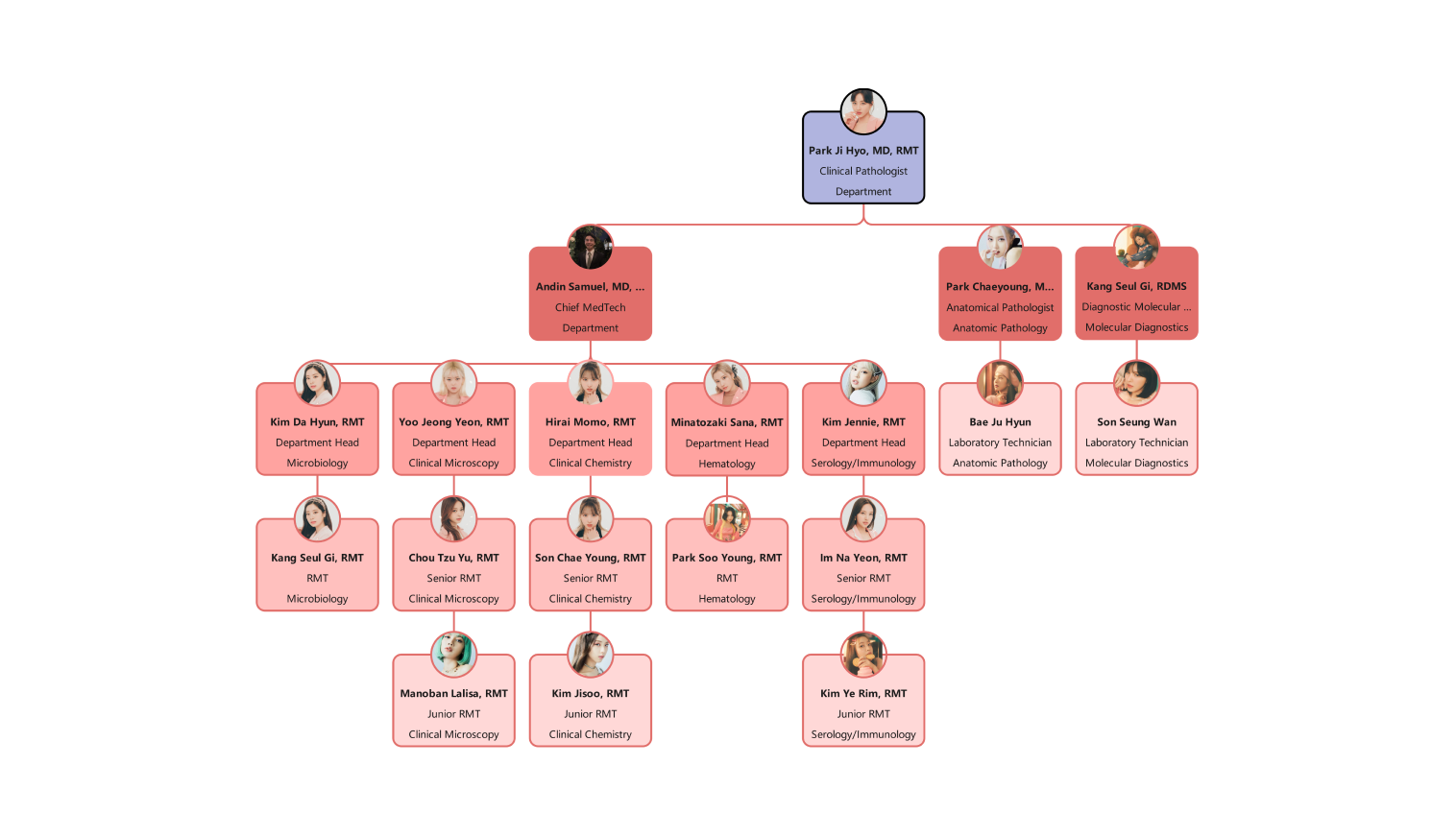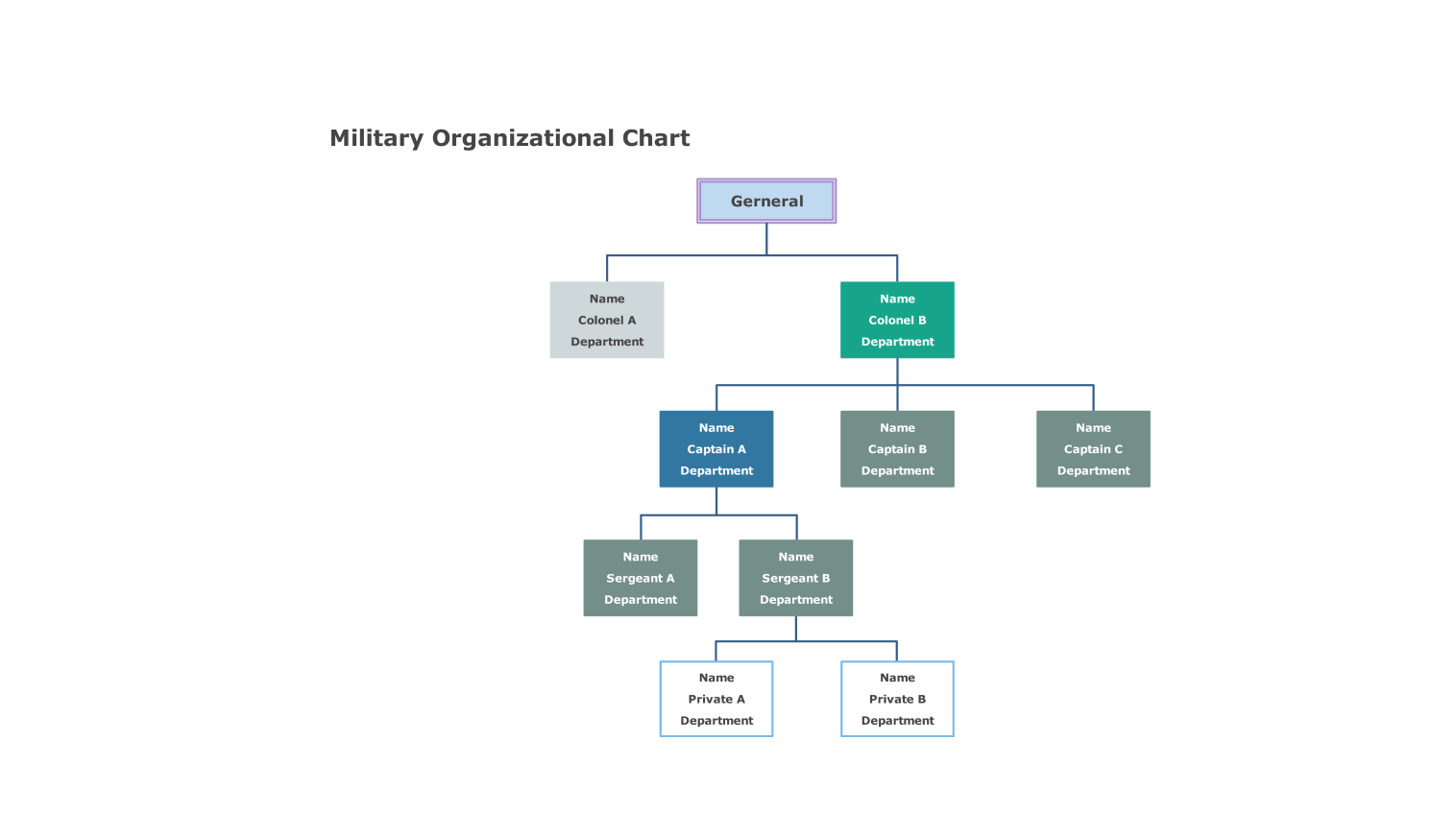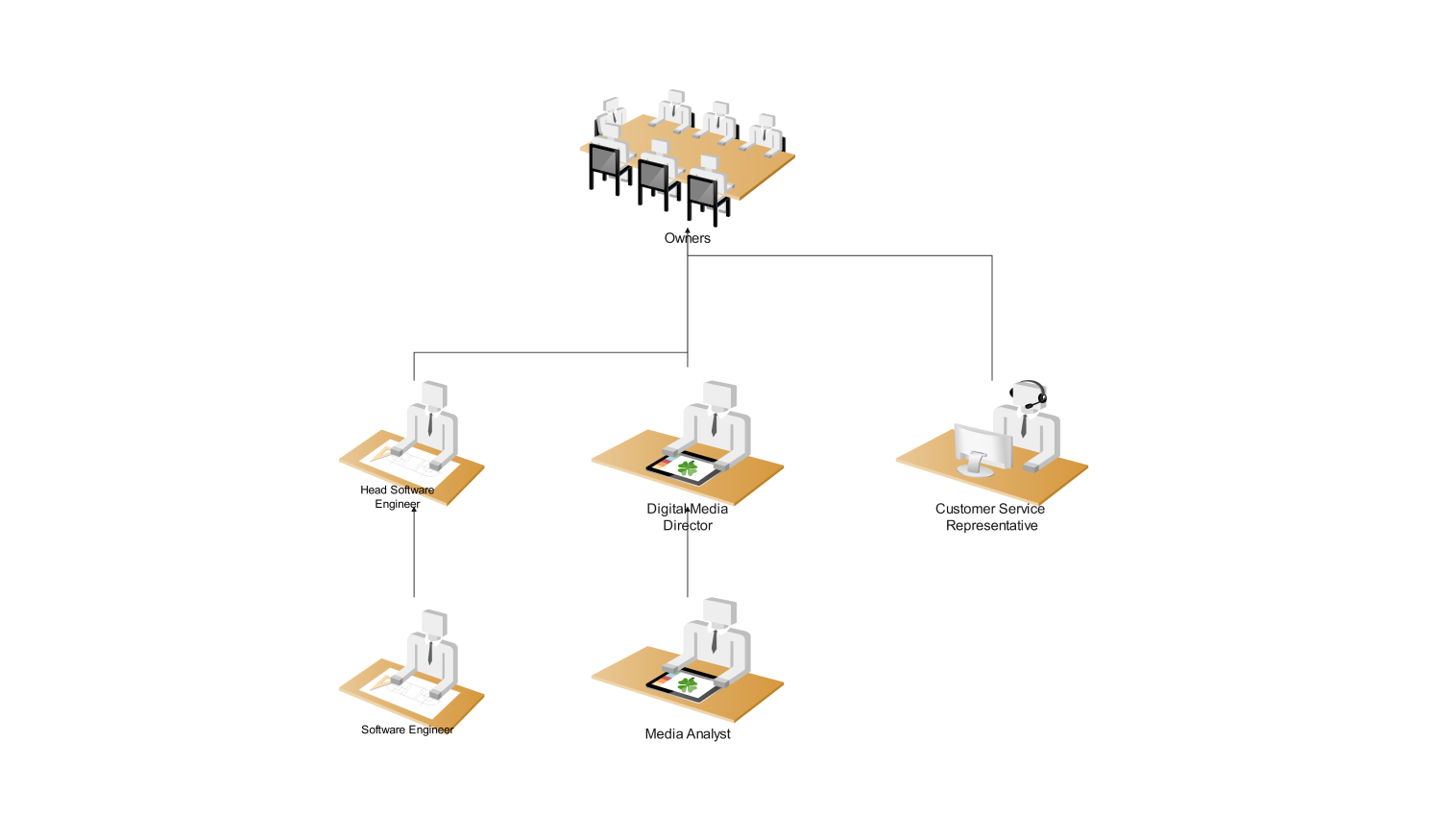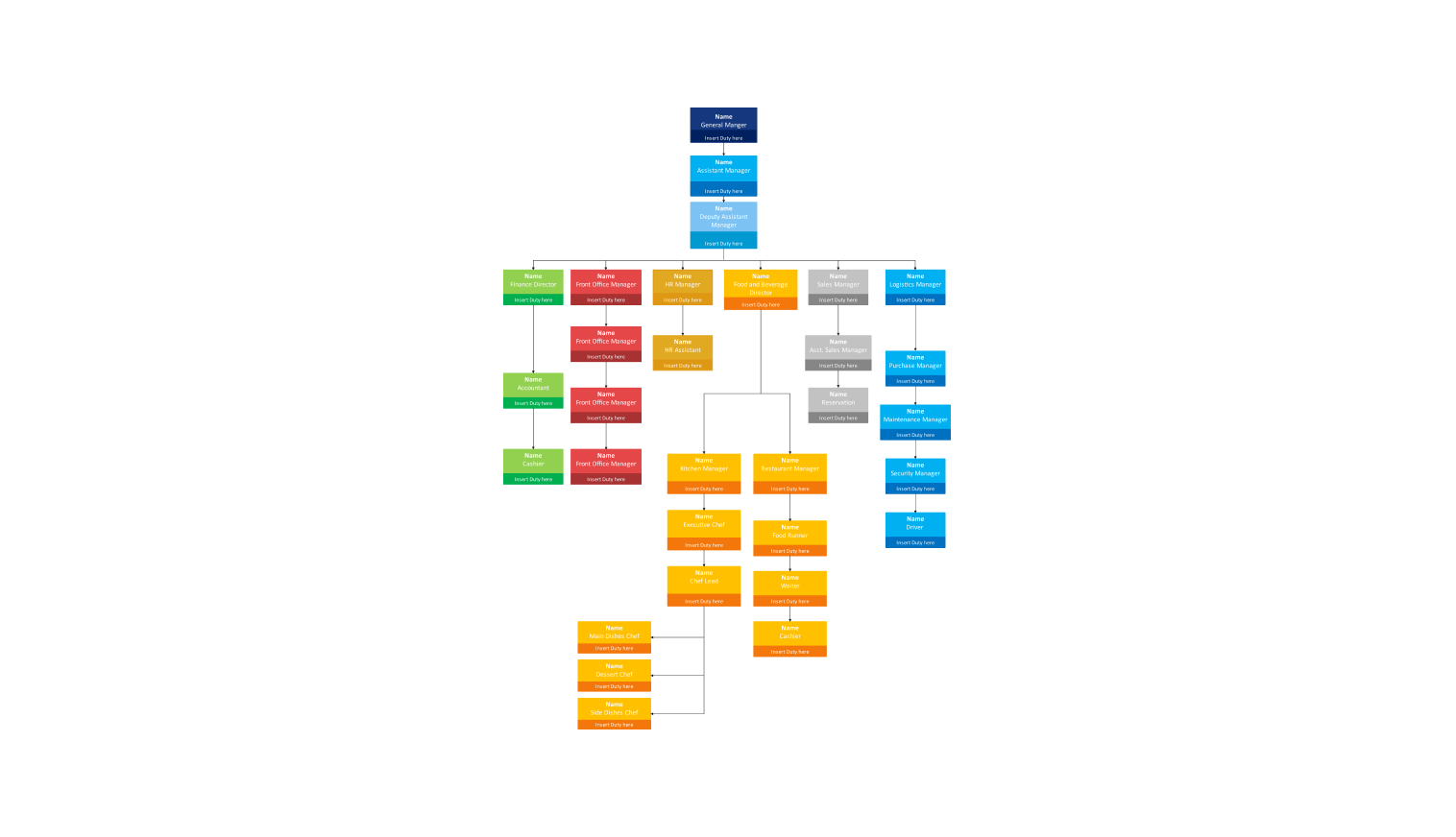- All templates
- Org chart templates
- Hospital org chart
About this template
The hospital organizational chart template shows the reporting structure of a hospital. It illustrates the different departments and positions within the hospital and how they relate to each other.
The chain of command in a hospital flows from top to bottom, with executive leadership making decisions that are then implemented by department heads, middle management, and frontline staff. The most senior position in the hospital organizational chart is the Chief Medical Officer (CMO) or medical director.
The CMO oversees all the medical departments within the hospital. Under the CMO, department heads manage specific areas, such as Anatomic Pathology, Microbiology, and Hematology. They report to the executive leadership team. Frontline staff includes lab technicians, med techs, and other staff who provide direct care to patients.
How to use this template
Open EdrawMax on your web browser or click Use this template.
Add shapes to the hospital organizational chart to represent the different positions in the hospital. Drag and drop the shapes to arrange them in the correct hierarchy.
Connect the shapes with lines to establish reporting relationships between positions.
Personalize the chart by adding text labels, images, and color schemes that suit your needs.
Save and export the hospital organizational chart as a PNG, JPG, PDF, or PPT file.
Benefits of the template
A hospital organizational chart is a diagram visually showing how a hospital is structured. It outlines the reporting hierarchy, with leadership positions at the top and staff positions branching out below. This chart is a valuable tool for several reasons.
First, it clarifies the roles and responsibilities of everyone in the hospital. Staff members can easily see who they report to and who to collaborate with for specific tasks. Second, the chart promotes efficient communication.
By understanding the chain of command, staff know who to contact with questions or concerns. This reduces confusion and ensures information reaches the right people quickly. Finally, an organizational chart helps hospital administration make informed decisions. It allows them to see how departments interact and identify areas for improvement.
Frequently asked questions
-
What is the best organizational structure for a hospital?Hospitals need different organizational structures depending on their size, services, and local healthcare. Typically, a board of directors and CEO oversee the entire hospital. The CEO has a team of four key people reporting to them: finance, administration, human resources, and support services.
-
What type of organizational structure is a hospital?Hospitals use a functional organizational structure with multiple levels of management to achieve this. It means different departments are grouped based on their specific function. For example, you'd have a cardiology department, a radiology department, and an IT department, all reporting to separate heads but working together to deliver patient care.
-
What are the three main organizational parts of the typical hospital?A hospital has three main parts: direct patient care, hospital admin, and medical staff. The direct patient care section includes doctors, nurses, therapists, and other staff focusing on diagnosing and treating patients. Next, there's the hospital administration. This group handles the business side of things, like billing, insurance, and keeping the hospital running. Then, the medical staff consists of licensed professionals who provide patient care.
Related templates
Get started with EdrawMax today
Create 210 types of diagrams online for free.
Draw a diagram free Draw a diagram free Draw a diagram free Draw a diagram free Draw a diagram free




